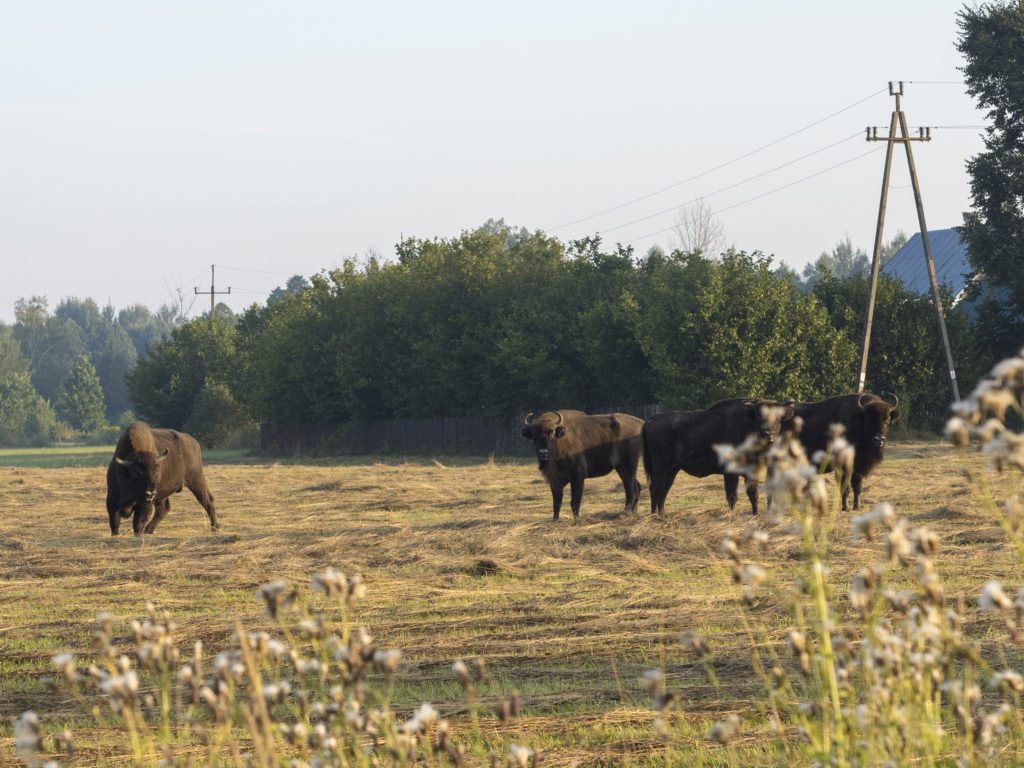Most people hear the word bison and think about the massive mammals roaming through the grasslands of North America. But their once nearly extinct cousin, the European Bison, inhabits dense forests in Eastern Poland. I recently had a chance to see it. How should you plan your visit to Białowieża Forest to maximise the chances of spotting the bison? Read my article to learn more and plan your trip to the land of zubr!
Looking for the bison
The dark sky is studded with stars when we’re getting ready, trying not to wake up the other camping guests.
Normally, I can barely force myself to get out of bed before seven, but the premise of seeing Europe’s largest land animal works miracles, and I am surprisingly wide awake at 3 a.m.
The wipers squeak each time our guide, Joao, tries to remove the humidity accumulating on the windscreen.
– It’s going to be difficult today – he sighs. – You can barely see anything.
We drive slowly, contemplating every contour emerging from the mist. Each pile of hay looks like it could be a bison.
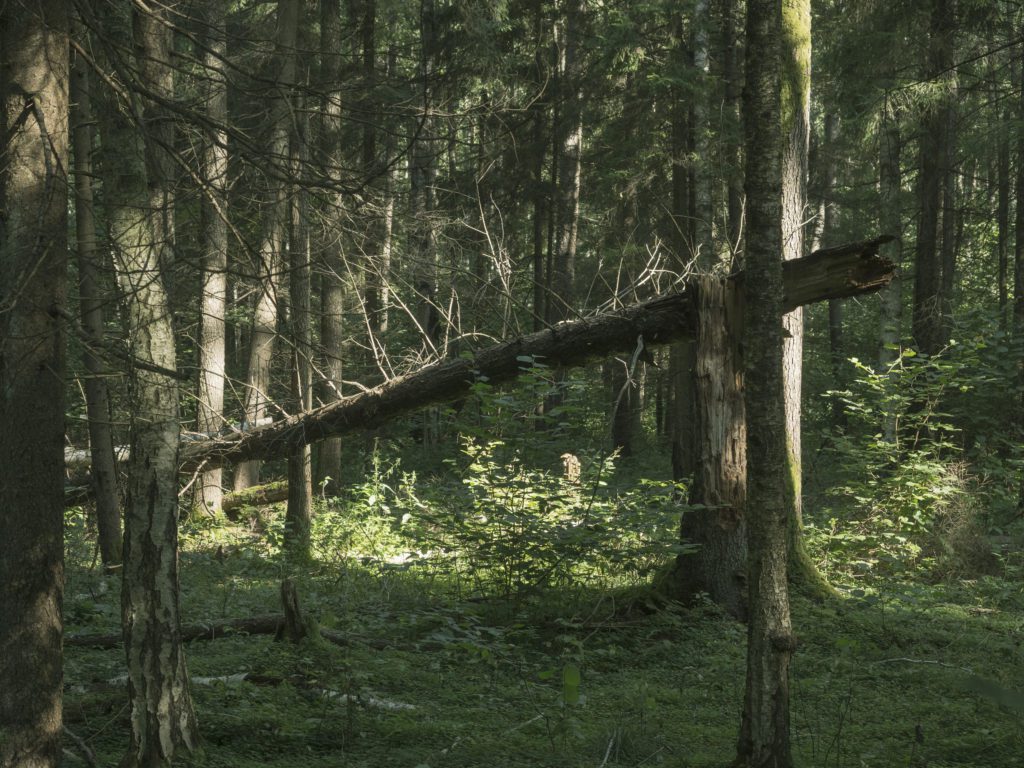
Squinting his eyes in the search for the animals, Joao tells us about places we pass by.
-Here lives Adam Wajrak, the famous nature conservationist and journalist. Have you seen those amazing photos of the bison he published? Guess what? He practically shot them from his backyard.
Despite being a tiny town, Białowieża seems to be a vibrant community of scientists, nature activists and artists. As if the deep green forest had a special power to attract brilliant minds.
After two hours of driving around, sleepiness starts kicking in, and I find it harder and harder to control yawning. Will we even see the bison today, or did I wake up in the middle of the night for nothing? Joao continues his story on the constantly ongoing battles to preserve the incomparable wildness of Białowieża Forest from greedy investors and corrupt politicians when we enter a dirt road. Suddenly, he stops and opens the door.
-Yes! Those are bison tracks – he points at some footprints in the muddy soil. – Looks fresh, so they have to be around.
I am wide awake again. We slowly drive ahead, looking for the stocky silhouettes. And when the sun begins to rise, they finally emerge, majestically walking out from the fog. A group of four bison slowly walks through a large field.
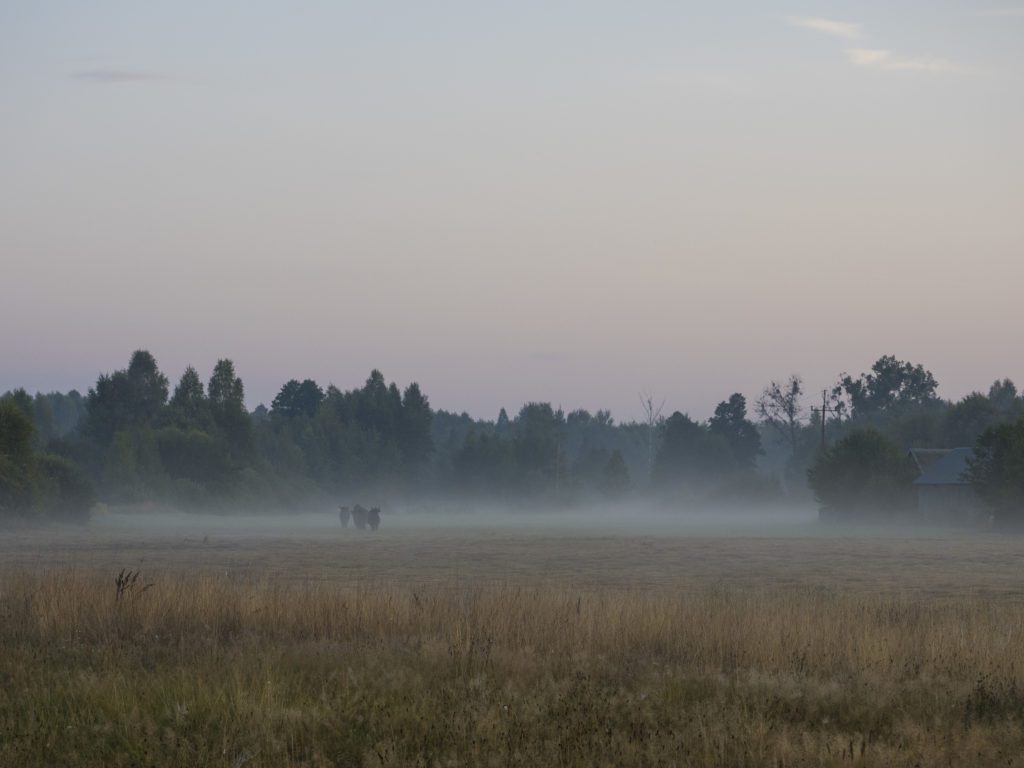
Without thinking, I open the car door wanting to get out. But Joao stops me.
-Let’s stay in the car! I will open the window so you can take pictures. For some reason, they get much less scared of people when they’re in the car.
We patiently wait, staring in awe at the hairy group. One of them is significantly larger. Turns out, he’s the only male in the group.
-I don’t want to disturb them. I always try to be as respectful as possible – says our guide. – If they start eating, they are okay with us being here.
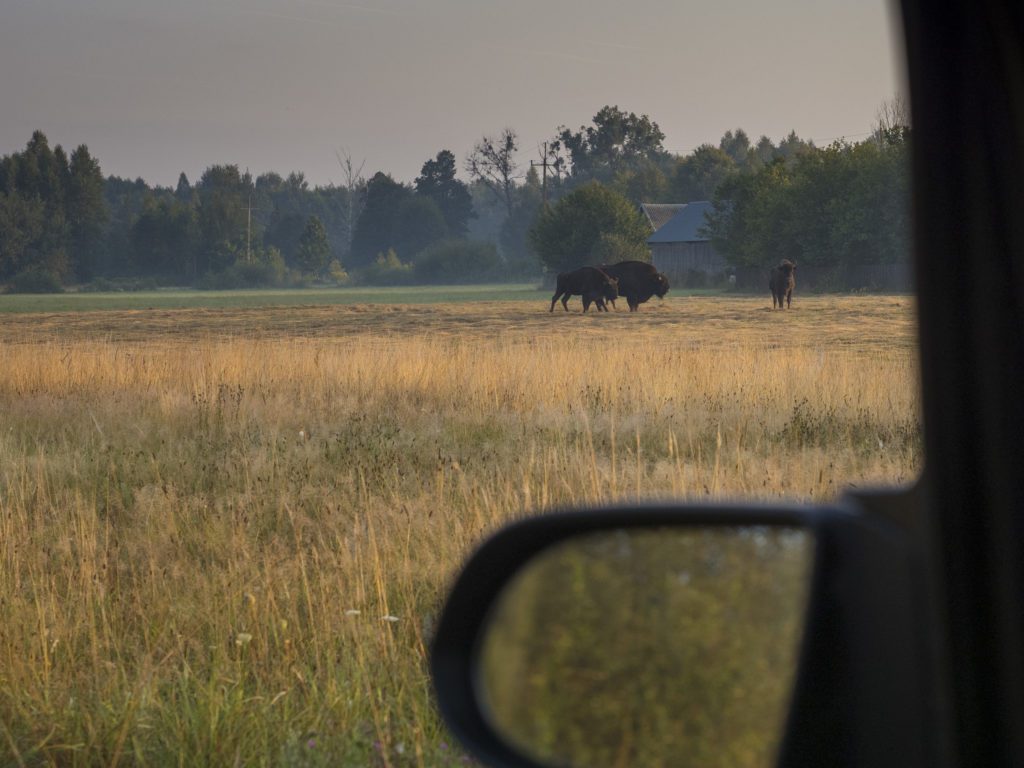
After a while, the strategy pays off. The animals come closer and closer and, every now and then casting a quick glance in our side, they start nibbling on the grass. At first sight, they look like giant hairy cows, but there is something monumental about them. Maybe it’s their big brown eyes filled with stoic calmness or the beard.
Despite the early hours, it’s getting hot. For the bison, the temperature feels like 10 degrees higher, says Joao. So it’s no surprise that after a quick breakfast, one after another, they turn around, and we are left to admire their hairy butts as they’re rushing back to the forest searching for some shade.
Where is the Białowieża Forest and why is it so special?
Once upon a time, most of the European Plain stretching from the French coast to the Ural Mountains in Russia was a massive primaeval forest. Over centuries, people settled all over the plain, and most of the woodland disappeared. But on the border between Poland and Belarus, just 250 kilometres from Warsaw, the last remnants of the forest survived and are now a unique nature reserve – a forest of a kind you cannot find anywhere else in Europe.
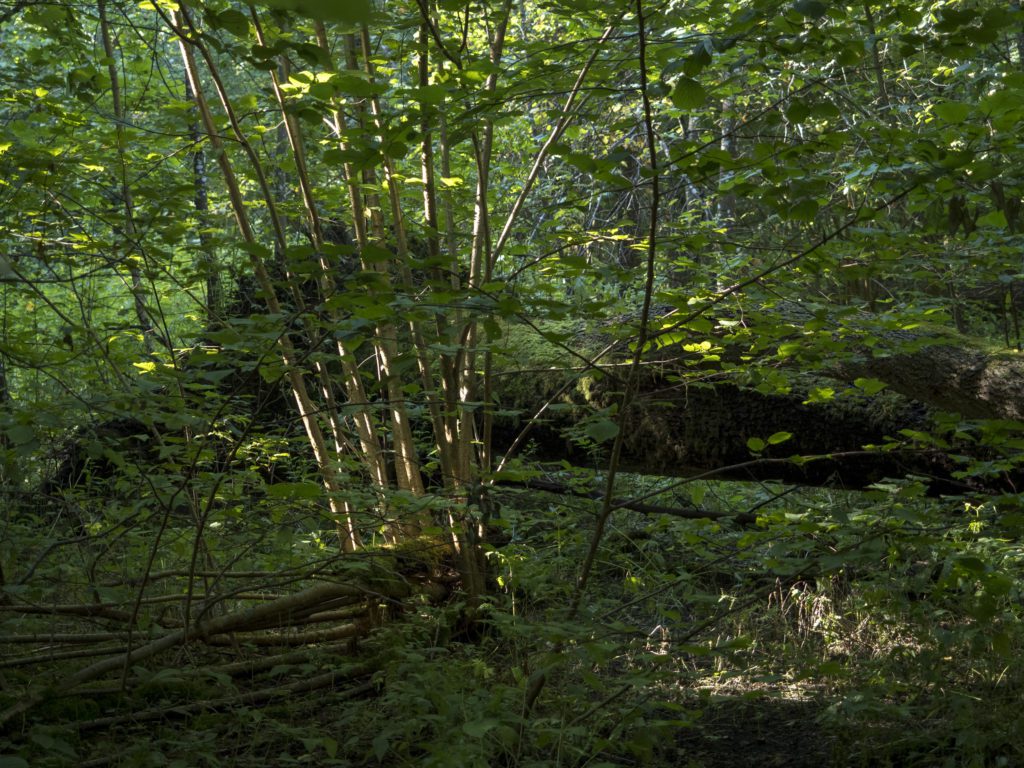
The forest is a protected area and a UNESCO World Heritage Site. Part of the forest is also a National Park.
What is the European bison, and where can you see it?
The majestic European bison was practically hunted to extinction in the wild over a hundred years ago. Some animals were kept in captivity, and in 1952, a couple of them were released into the wild in the Białowieża Forest.
W 2021, there were less than ten thousand European bison in the entire world, a quarter of them living in Poland. The biggest bison population inhabits the Białowieża forest.
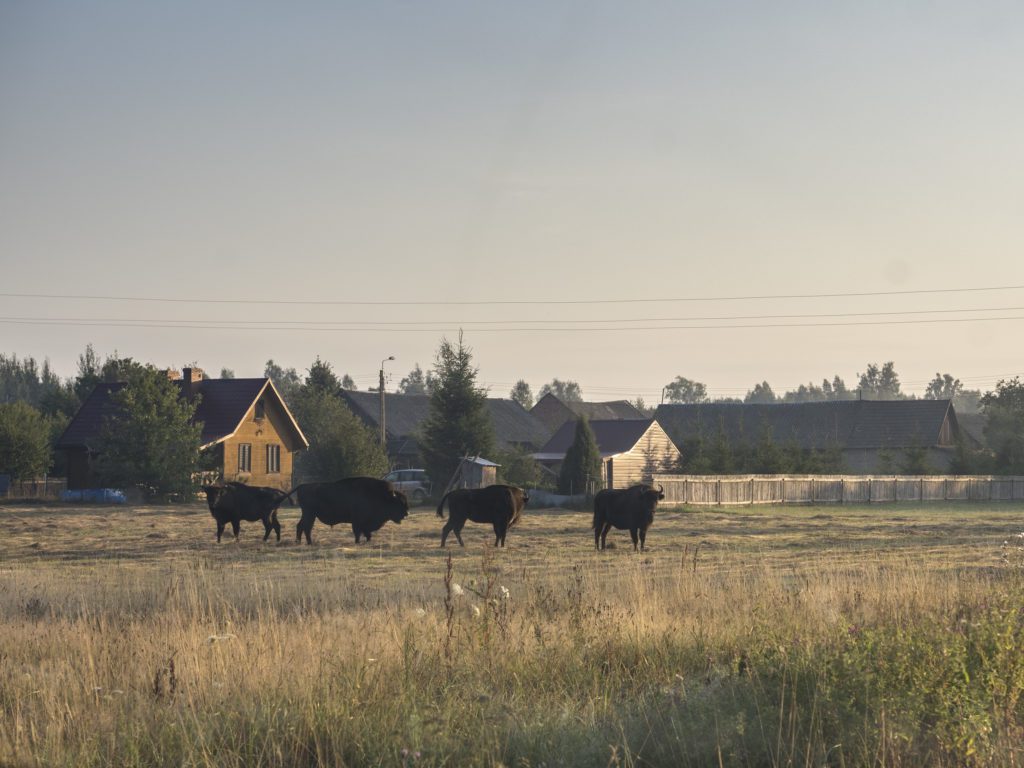
In the morning, they often leave the dense vegetation and head for a stroll through the villages of Białowieża, Narewka and Budy. The locals often see them munching on some grass in their fields.
How is the European bison different from the American bison?
The European bison, also known as the wisent or the zubr is sleeker, taller and less hairy than its American cousins. It also has more curved horns. A male bison typically weighs between 400-900 kg. The females are up to 540 kg heavy.
Getting to Białowieża
Samochodem
The easiest way to reach Białowieża Forest is by car. It takes about three and a half hours to drive to Białowieża from Warsaw.
By public transportation
If you don’t have a car, you can take a train from Warsaw to Hajnówka (there are no direct trains, so you’ll have to change once). Find your connection tutaj.
From Hajnówka to Białowieża, there are a couple of buses a day (the last one leaves at 15:40). You can find the timetable tutaj. The bus departs from the bus station (Dworzec PKP), around 600 metres from the train station, on Dworcowa 2 Street.
Accommodation in Białowieża
There are plenty of cosy guesthouses and a few spa hotels in Białowieża. Prices are affordable, ranging from 20 to 100 euros per night for a double room.
Book your stay in Białowieża on booking.com
Campsite in Białowieża
We decided to stay at a lovely campsite Camping “Dom Pod Bocianem”, next to a guesthouse with the same name. We paid 70 zł/night for two people. The campsite is in the centre of the village, yet feels very calm. The toilets and showers are clean. There is also a small, nicely equipped kitchen. And in the morning, you will likely encounter a stork walking around unbothered by the campsite guests.
Restaurants in Białowieża
There is quite a good selection of places to eat in Białowieża, offering the best regional dishes such as babka ziemniaczana, kartacze and plenty of good meat.
If you’re vegetarian, you’ll find most options in Fanaberia. For the best Polish cuisine, European vibe, and affordable prices, visit Restauracja Pokusa.
If you need something more fancy, Restauracja Stoczek will definitely meet your expectations.
What’s the best time to visit Białowieża forest to see bison?
You can visit Białowieża all year round. Even during the summer vacation, the place is not too overcrowded. We came in August, around the long weekend and national holiday, and it still didn’t feel overwhelmingly touristy. We also managed to spot the bison in its natural habitat.
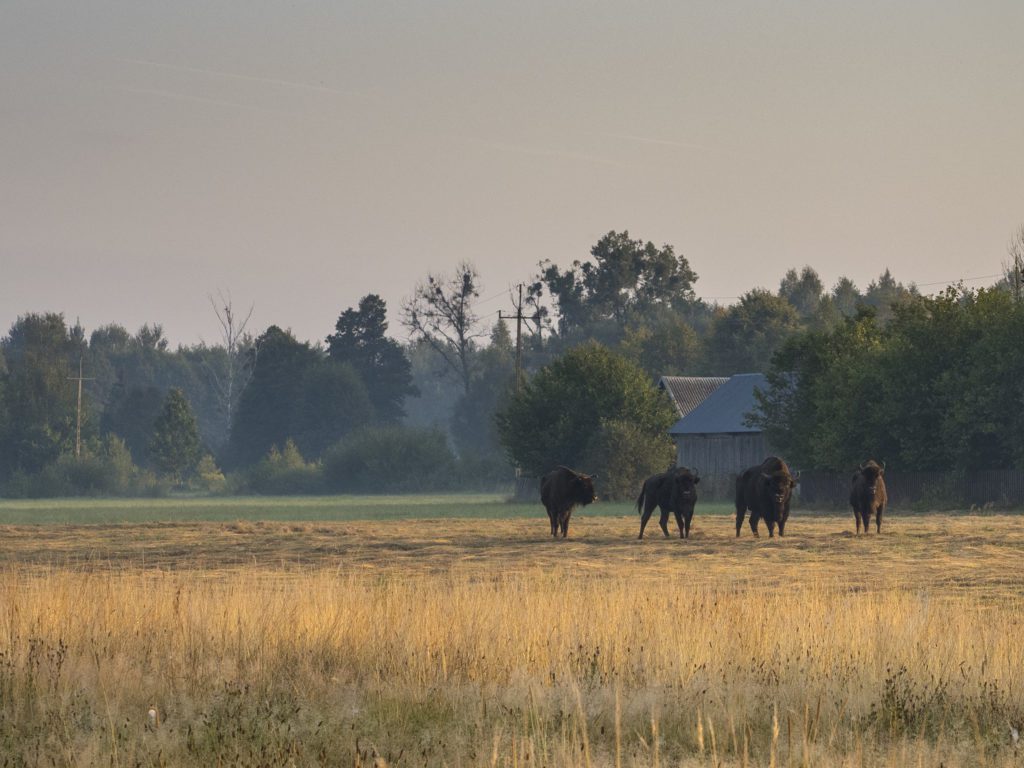
To maximise your chances of seeing the European bison, visit Białowieża in autumn or winter. The king of the forest doesn’t handle the hot temperatures well, so during the summer days, the bison stays in the cool shadow of the forest as much as possible. During autumn, when the leaves change their colour, the primaeval forest turns into a sea of orange and red, and the bison spend more time roaming around and searching for food.
How to find bison in Białowieża forest?
You can, of course, embark on a bison safari on your own. We decided on a guided tour for two reasons: to learn more about Białowieża forest and its king and to maximise our chances of spotting the bison.
If you’re looking for an English-speaking guide in Białowieża forest, I absolutely recommend Joao from the Mikrowyprawy team. He has lived in Białowieża for 9 years. He knows everything about the bison, wolves and other creatures you can meet in the forest. Nature conservation and observation is Joao’s life, and he says that almost 99% of his guests are lucky to spot the bison during the tours with him.
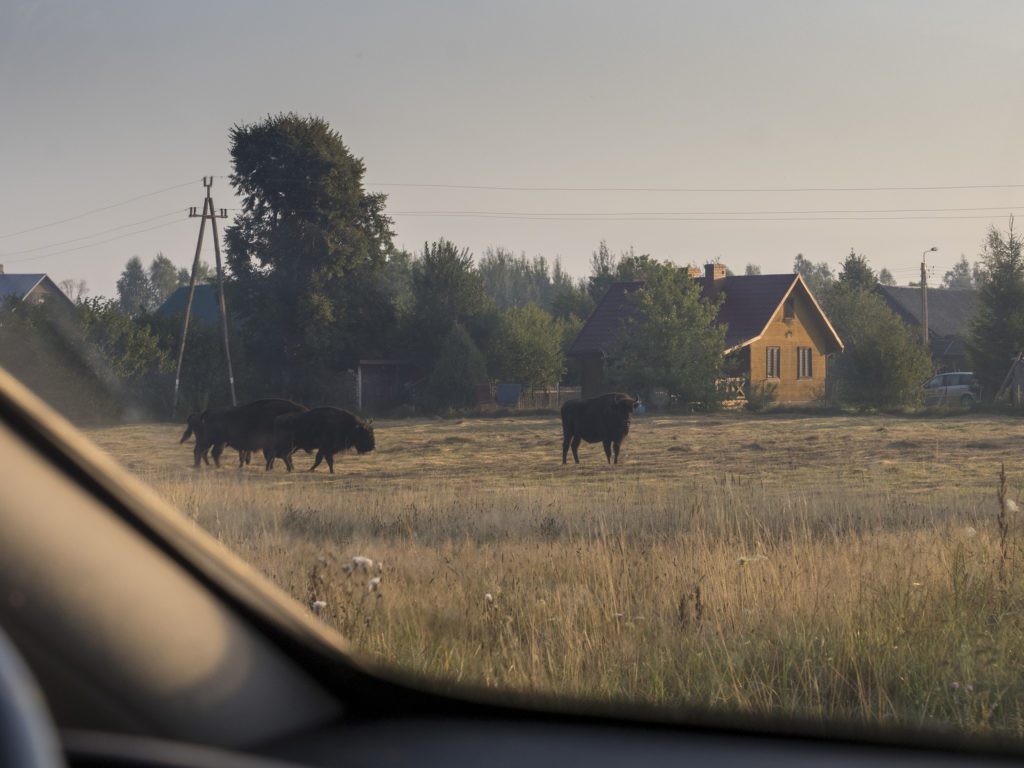
The tour started early, at 4:00 in the morning. After two hours of driving around, we managed to spot three bison ladies and one majestic bison gentleman. Had we been alone, we would probably spoil this moment by scaring the bison off. Joao instructed us how to behave to respect their space and gain their trust so we could embrace them calmly eating their lunch in the field for almost 30 minutes.
The tour takes three hours. We paid 450 złoty (around 100 euros) for two people. You can send an inquiry via a contact form tutaj (the website is in Polish only, but the team speaks English). You can do it by car or walk. Pros of the first option? There is a bigger chance to find the bison as you can cover a larger area. If you decide to do the tour on foot, bring waterproof boots, mosquito spray and a mosquito net for your head.
Watching the bison in the show reserve
If you had bad luck and didn’t find the bison in the wild, you can still visit the show reserve, where the animals are kept in semi-natural conditions. You can see bison but also wolves, boars, deer and a curiosity: a hybrid of bison and cattle.
The entry fee is 20 złoty (ca. 4.5 euros). You can buy the ticket at the entrance or online.
Check out the opening hours here.
Hiking paths in Białowieża Forest
The Białowieża Forest is not only about the bison. It’s also a tranquil refuge for anyone who wants to immerse themselves in pristine nature. If you want to enjoy some forest bathing in Białowieża, you should try one of these hiking trails.
Żebra Żubra (The ribs of the bison)
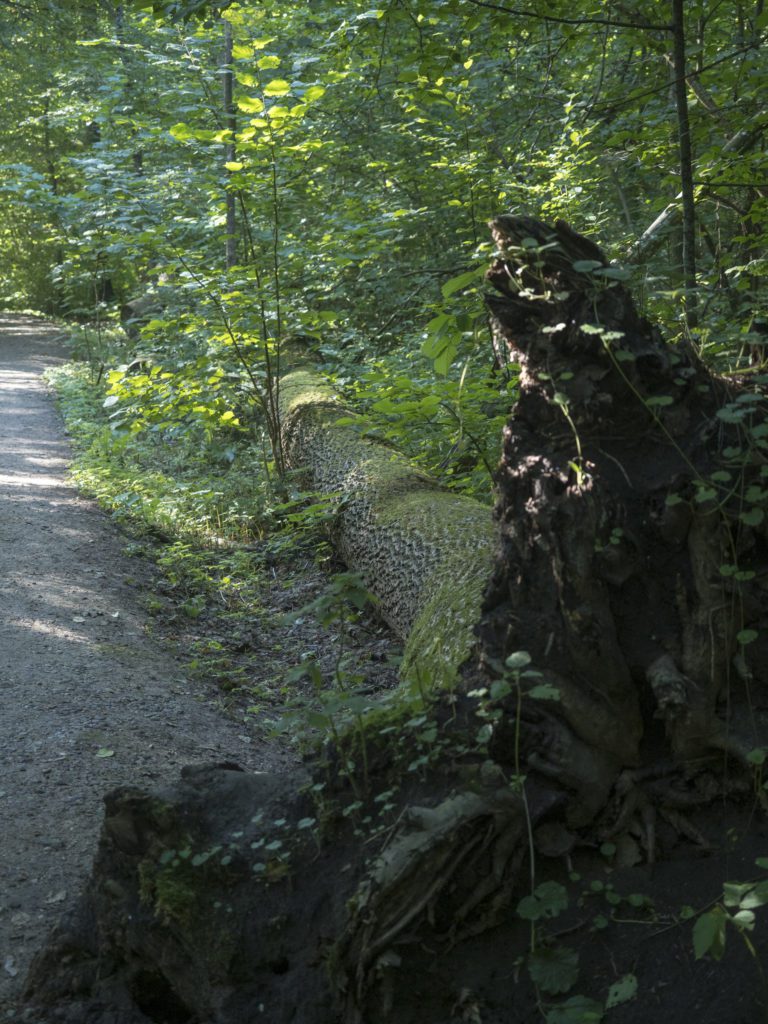
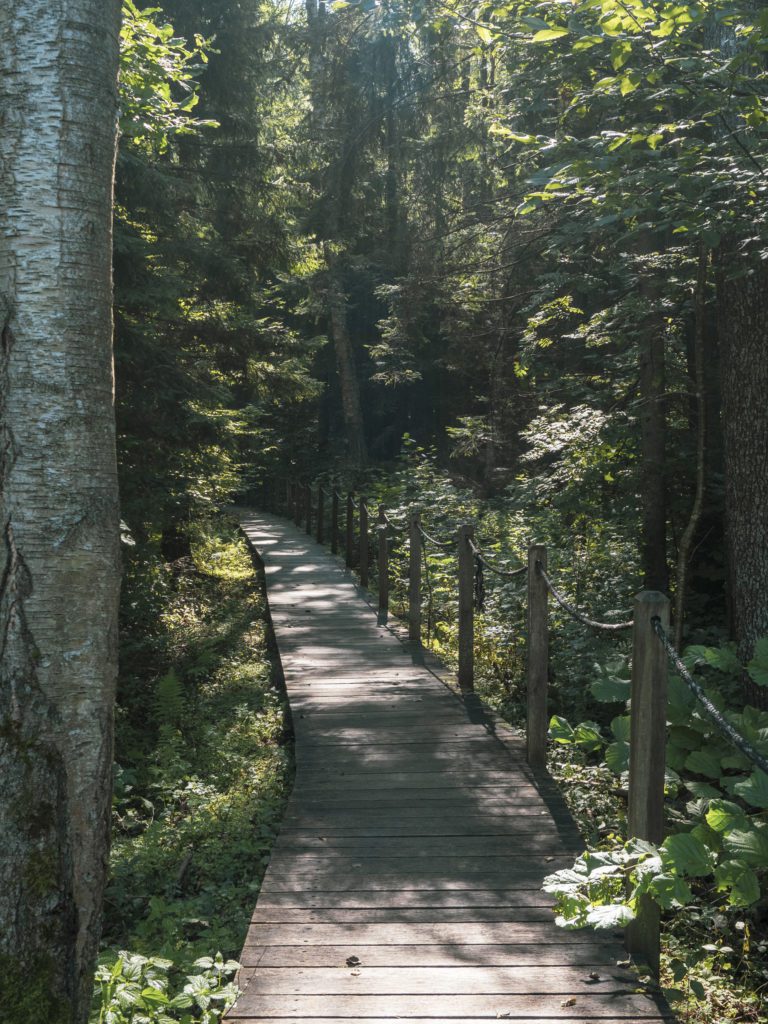
Length: 2,7 km one way
The educational path Żebra Żubra is a short walk on boardwalks leading through some wetlands and marshes in the northern part of Białowieża Forest. At the end of the trail, you’ll find the bison show reserve. This trail is suitable for kids and beginners. Make sure to bring mosquito spray – the humidity attracts plenty of bugs! If you go there early in the morning, there is a great chance to spot some wildlife.
If you’re looking for longer hikes in the Białowieża forest, there are plenty of trails to choose from. You will find some recommendations tutaj.
Cycling in Białowieża Forest
Białowieża and the entire Podlasie region is a paradise for cycling. Predominantly flat, with kilometres of unspoilt nature, serene country roads, and rich culture, it makes a fantastic playground for cyclists of any fitness level.
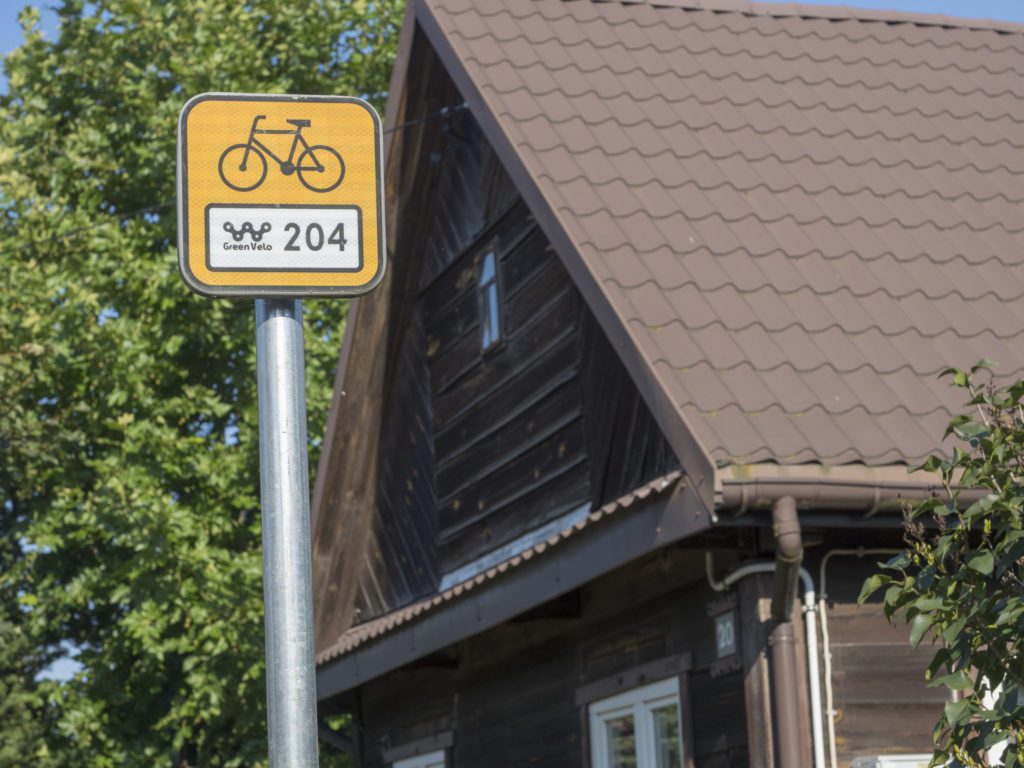
If you plan a long bicycle tour with a visit to Białowieża Forest, consider the Green Velo cycle route. Stretching from north to south and following Poland’s eastern border, it gives you a rare insight into the fascinating diversity and uniqueness of the region.
If you’re interested in day tours, I recommend the Biodiversity Trail of Białowieża Forest.
